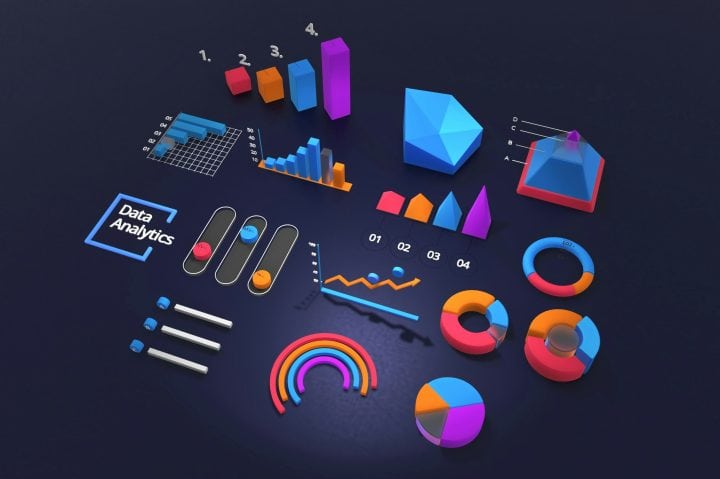Data analytics has become a necessary skill in today’s data-driven world. Whether you are a beginner looking to understand the fundamentals or an experienced analyst seeking to enhance your skills, mastering data analytics can open numerous opportunities.
This detailed guide covers everything from the basics to advanced techniques to help you navigate the vast field of data analytics.
A Brief Introduction to Data Analytics
Data analytics’ central concept is examining data sets to draw conclusions about their information. It encompasses various techniques, from simple descriptive statistics to complex predictive models.
Understanding these techniques can help businesses make informed decisions, optimize operations, and uncover new insights.
Data analytics analyzes raw data to uncover trends, patterns, and insights.
This process involves collecting, cleaning, transforming, and modeling data to make it worthwhile. Tools like Excel, SQL, and Python are commonly used in data analytics to perform these tasks efficiently.
Getting Started with Data Analytics
For those new to data analytics, starting with the basics is crucial.
Here are the fundamental steps to get you on the right track:
Step 1: Understand the Data Analytics Process
The data analytics process typically follows these steps:
- Data Collection: Gathering needed data from different sources.
- Data Cleaning: Removing errors and irregularities from the data.
- Data Transformation: Changing data up into a suitable format for analysis.
- Data Analysis: Using statistical methods and algorithms to the data.
- Data Visualization: Presenting the findings in a visual format like charts or graphs.
Step 2: Learn Essential Tools and Techniques
To perform data analytics effectively, familiarize yourself with essential tools and techniques:
- Excel: Ideal for fundamental data analysis and visualization.
- SQL: Useful for querying databases and handling large datasets.
- Python/R: Powerful programming languages for advanced data analysis and machine learning.
To master these and many more tools, you can find a good data analytics course to your liking, which will give you a solid foundation.
Step 3: Practice with Real Data
Hands-on practice is crucial for mastering data analytics. Use publicly available datasets like those from Kaggle to hone your skills. Try analyzing different data types like sales, customers, or social media.
Intermediate Techniques in Data Analytics
Once you grasp the basics, it’s time to delve into more advanced techniques. Here are some intermediate methods to enhance your data analytics skills:
Data Visualization
Data visualization involves creating visual characterization of data to make complex information more understandable. Tableau and Power BI are famous for creating interactive and insightful visualizations. Learn to create various types of charts, such as bar charts, bubble charts, line graphs, and scatter plots, to communicate your findings effectively.
Statistical Analysis
Statistical analysis involves using mathematical techniques to analyze data and make inferences. Regression analysis, hypothesis testing, and ANOVA (Analysis of Variance) can help you identify relationships between variables and test your hypotheses.
Data Mining
Data mining is all about discovering patterns and relationships in large datasets using clustering, classification, and association rule mining techniques. This process can help businesses identify customer segments, predict trends, and optimize marketing strategies. Furthermore, to manage and analyze these datasets effectively, consider using Smartsheet alternatives, offering advanced data management and visualization.
Advanced-Data Analytics Techniques
Mastering advanced techniques is essential for those looking to specialize in data analytics. Here are some advanced methods to consider:
Machine Learning
Machine learning involves training algorithms to make predictions or decisions based on data. Techniques like decision trees, random forests, and neural networks can be used for categorization, regression, and clustering tasks.
Understanding machine learning requires knowledge of programming languages like Python and frameworks like TensorFlow and sci-kit-learn.
Big Data Analytics
Big data analytics involves analyzing large and complex datasets that traditional data processing tools cannot handle.
Technologies like Hadoop, Spark, and NoSQL databases are used to process and analyze big data. Learning these technologies can help you efficiently manage and analyze vast amounts of data.
Predictive Analytics
Predictive analytics uses already-known data to predict future events. Techniques like time series analysis, forecasting, and predictive modeling can help businesses anticipate trends and make proactive decisions.
This study highlights how predictive analytics can improve business outcomes.
The U.S. Bureau of Labor Statistics states that the demand for data scientists is expected to grow much faster than average, indicating a strong future for those skilled in advanced data analytics methods.
Conclusion
Mastering data analytics is an exciting journey that involves continuous learning and practice.
By starting with the basics and progressively tackling more advanced techniques, you can develop the skills to analyze data effectively and make reasonable decisions.
Whether you are a beginner or an experienced analyst, there is always something new to learn in the ever-evolving field of data analytics.
Author bio
Name: Rebecca Wilson
Rebecca Wilson is a Content Strategist at Syntax Technologies with over a decade of experience in the tech industry. As a seasoned software engineer and data analyst, she has contributed to groundbreaking projects and innovations at leading tech companies. Emily enjoys writing about the latest trends in technology, sharing insights on AI advancements, and exploring the future of machine learning.
